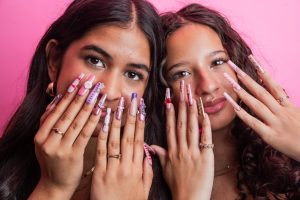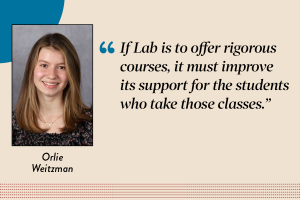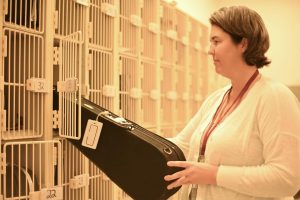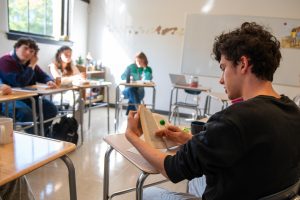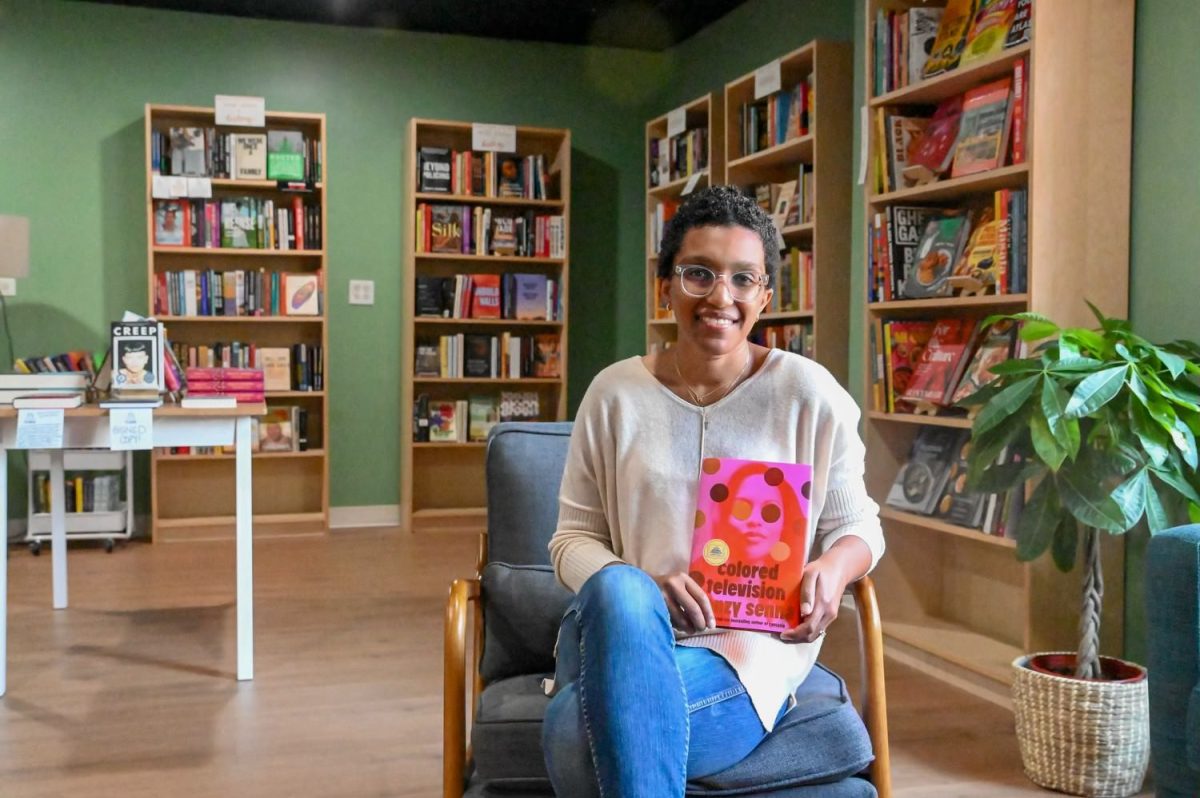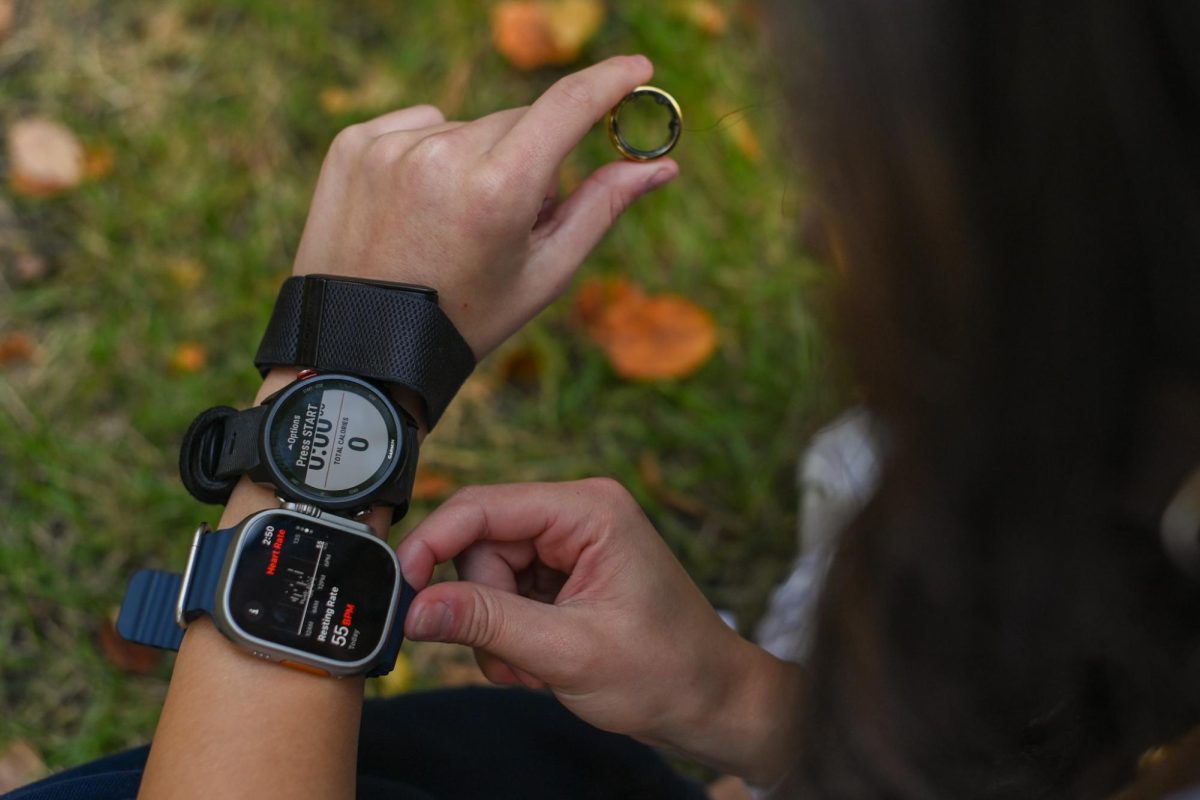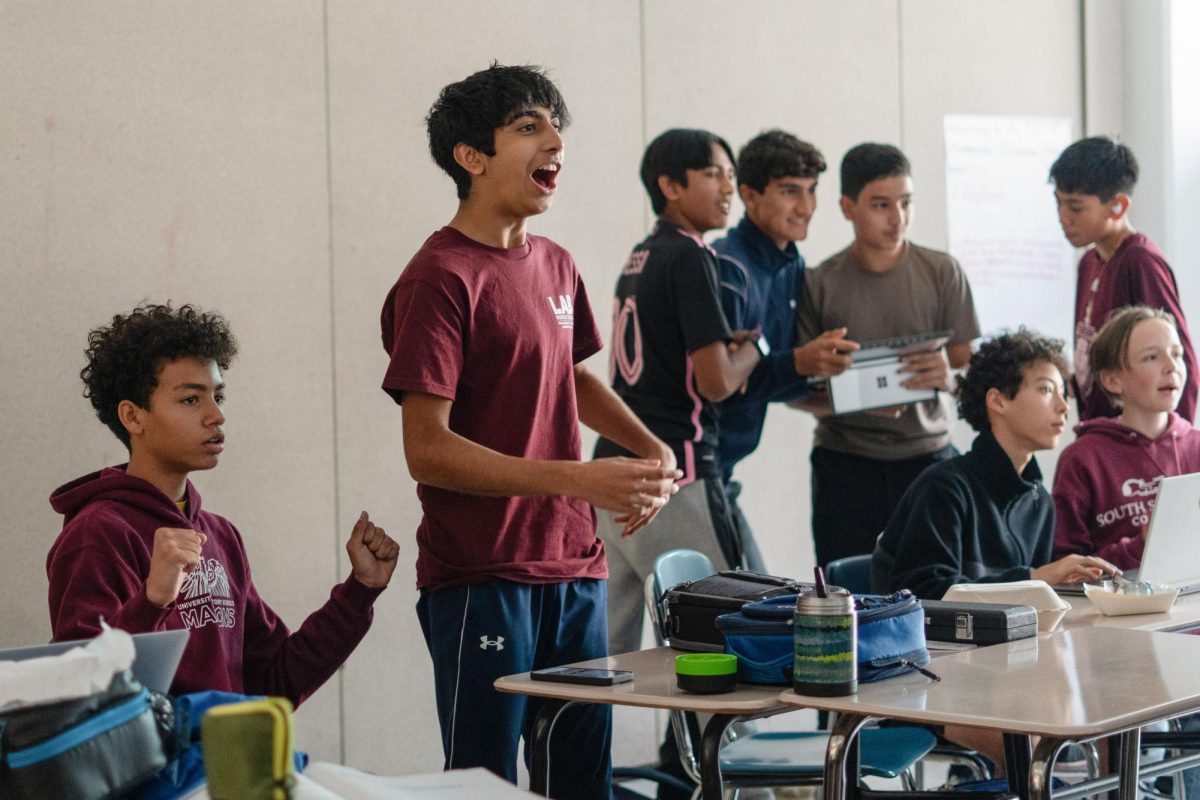Stitched together: New elective blends artistic creativity, fashion through experimental approach
January 23, 2023
Shick. Shick. Shickshickshick. Sewing machines putter, pins clink against tables, and fabric rustles in Room N316 of Gordon Parks Arts Hall. But this isn’t an assembly line or tailor shop. In this class, students create pieces of clothing with fine arts teacher Ana Romero’s guidance.
Exploring the intersection and divide between clothing as art and as fashion is one goal of Sew-Called Creations, a one-semester course taught by Ms. Romero.
“The idea behind the class,” Ms. Romero said, “was to think about clothing and garments not only as something utilitarian, to protect ourselves — the way we wear our clothes — but as something more of an art form.”
Nick Cave’s “Soundsuits” inspired Ms. Romero to look at clothing as not just a human necessity but also as an outlet for art. Mr. Cave, a Chicago-based sculptor and fashion designer, responded to police brutality by creating the intricate costume sculptures, which were displayed at the Museum of Contemporary Art in summer 2022.
Ms. Romero hopes to help her students similarly re-imagine clothing’s possible purposes. Recently, she gave groups of students a suitcase with random pieces of clothing. The project facilitated creative thinking about transforming clothing.
“The groups had to deconstruct the clothing pieces and then construct something new, completely different,” Ms. Romero said. “For example, someone took jeans, and they made it into a small little top… We’re recycling, reusing, repurposing garments.”
Adrija Chatterjee, a ninth grader, said the projects are more relaxing and free-form. Structured in-class tasks can also be very helpful.
“There’s, like, stitch samples that we have to do, to learn how to do specific stitches, but the projects, they’re very free-flowing,” Adrija said, adding that Ms. Romero is “open to any ideas, and she’ll be really happy to see us creating.”
Junior Stella Sturgill has had prior experience with sewing but said that sewing in class has made it easier for her to practice her craft.
“I think that doing it more consistently, and being more familiar with and consistently working on themes and patterns and, like, stitches and stuff like that,” Stella said. “It’s made it easier for me to sew on my own because I have more familiarity with what I’m doing.”
After satisfying her fine arts graduation requirements, Stella said she took Sew-Called Creations as an elective for personal fulfillment. She took photography as a ninth grader but said she felt the art classes during distance learning were limited in scope and activity.
“I also really regretted not taking an art class last year, just because I think that there’s a difference between having a free period and having a class that’s specifically, like, for art or just for something that you’re passionate about,” Stella said.
She also said she likes the course’s lack of rigidity, due to figuring it out as they go along, and that Ms. Romero acts as a guide who is also still learning, rather than an expert.
“I really appreciate the way that Romero goes about teaching the elective, which is that it’s the first year that it’s being taught and so we’re, like, kind of figuring stuff out as we’re going,” Stella said. “Ms. Romero has a ton of experience with sewing, but she’s never taught it before to people, so she doesn’t really act as if she knows more than you. It’s more like she will help you get to the end result that you want to go to.”
Because Sew-Called Creations is a one-semester course offered in both fall and spring, students can choose when to take it. Some, like Stella, plan to continue in the second semester, while Adrija said she might focus on other courses or explore another art class.
Since this is the first time Sew-Called Creations has been offered, Ms. Romero said that teaching students to sew and reimagine clothing as an art form was less straightforward than she had thought.
“We really need to have some serious sewing skills, whether that’s hand stitching or using the machine or knowing how to cut fabric or even knowing the complexity of fabric and how it wraps around the body,” Ms. Romero said. “There’s a lot more to it than just maybe what I initially thought, which is, ‘Let’s just make art with that with clothing.’”



